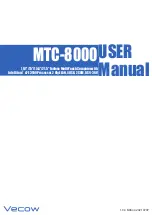
114201I – System Installation Manual
13
C H A P T E R 6
I
NSTALLING
B
ATTERIES AND
DC
W
IRING
WARNING
Only qualified service personnel (such as a licensed electrician) should perform the
battery and DC wiring installation. Risk of electrical shock exists.
This section explains how to install system batteries, fuses, and cables. An electrician who is
familiar with battery installations and applicable building and electrical codes should install
the batteries.
WARNING
The batteries that will need to be installed in this system could cause you harm or severely
damage the electronics if proper precautions are not followed. Batteries connected in series
parallel configuration could produce lethal voltages with unlimited current. All batteries
should be inspected for damage prior to installation. Never install a battery that is leaking
electrolyte. Battery terminals should be cleaned with a wire brush to remove any oxidation.
All tools should be insulated. Rubber gloves and safety glasses are recommended.
IN THIS
SYSTEM BATTERY NEGATIVE IS TIED TO GROUND INSIDE THE INVERTER.
This
means that the battery cabinet and shelves are at ground potential as soon as negative
connections are made to the batteries. It is strongly recommended to make all negative
connections to the batteries the last step to prevent any chance of shorting battery positive to
ground. With the Battery Cabinet(s) fuse removed and the DC Breaker turned off, make
connections to battery positive first, working your way towards battery negative. Leave
individual strings of batteries open at the last battery negative until all batteries are installed.
Then connect each strings negative.
Safety Instructions
IMPORTANT SAFETY INSTRUCTIONS
SAVE THESE INSTRUCTIONS
This section contains important instructions that a qualified service person should
follow during installation and maintenance of the system and batteries. ONLY a
qualified service person should work with the batteries.
CAUTION
Full voltage and current are always present at the battery terminals. The batteries used
in this system can produce dangerous voltages, extremely high currents, and a risk of
electric shock. They may cause severe injury if the terminals are shorted together or to
ground (earth). You must be extremely careful to avoid electric shock and burns
caused by contacting battery terminals or shorting terminals during battery installation.
Do not touch uninsulated battery terminals.














































